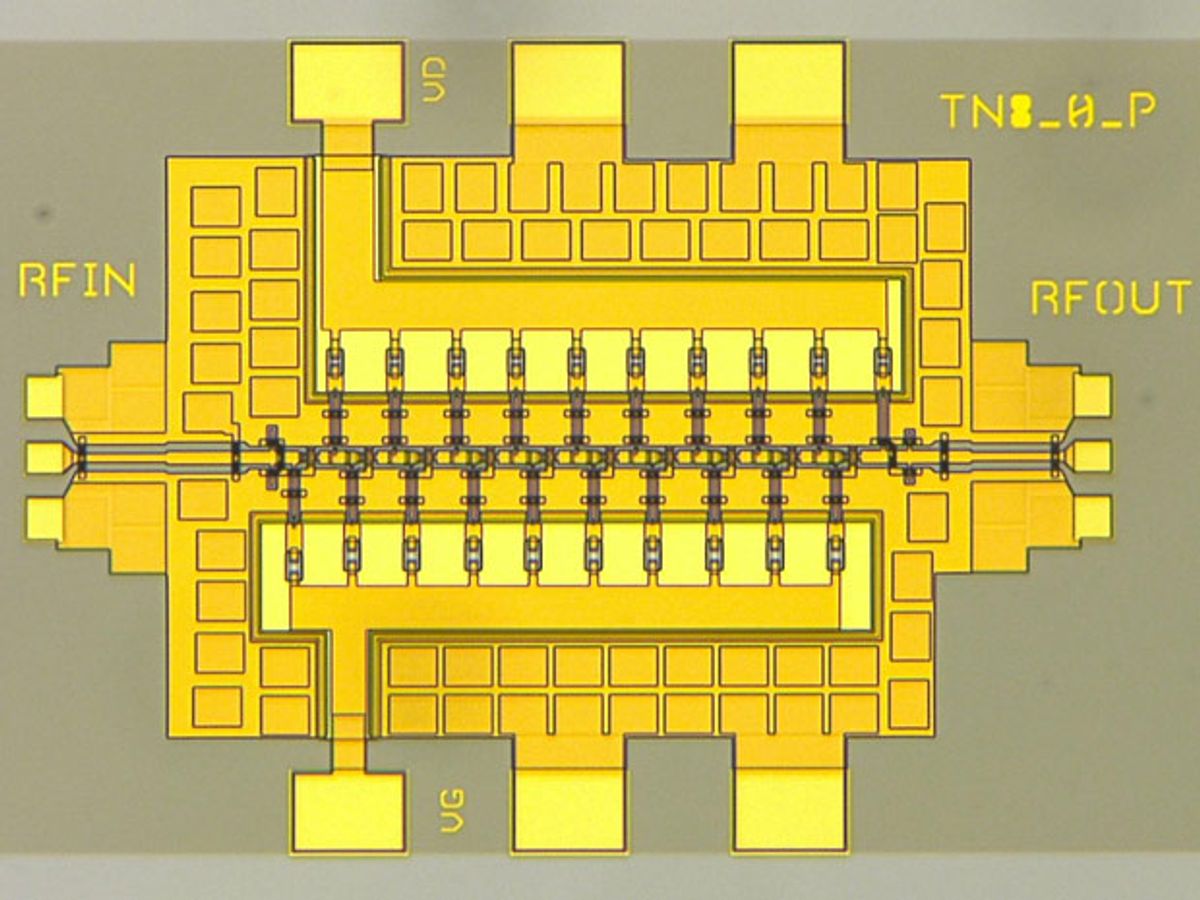The world’s first radio amplifier operating at terahertz frequencies could lead to communications systems with much higher data rates, better radar, high-resolution imaging that could penetrate smoke and fog, and better ways of identifying dangerous substances, according to the researchers who built it.
“We just took it up to 11,” says Bill Deal of the Terahertz Laboratory at Northrup Grumman, which built the amplifier under the Defense Advanced Research Project Agency’s Terahertz Electronics program. Engineers announced their achievement last week in a press conference at which the Guinness Book of World Records recognized them for creating the fastest solid-state amplifier circuit ever built.
The terahertz region is that band of frequencies that lie between infrared light and radio waves, and is usually defined as being between 300 GHz and 3 THz. Engineers would like to open up that part of the spectrum for communications. T-rays, as they’re known, also have the advantage of being able to penetrate many materials without using ionizing radiation and to identify substances spectroscopicly, so they could be used to find drugs, explosives, and pathogens. The problem is that it’s been notoriously difficult to build sources and detectors in that region of the spectrum.
But the team says they’re helping to close the terahertz gap. The amplifier shows a gain of 10 decibels at a frequency of 1 THz, and 9 dB at 1.3 THz. “Ten decibel gain gets you into the region where you can think of building real radio circuits,” says Dev Palmer, manager of the DARPA program. By contrast, most cell phones operate at about 2 GHz. Deal says the improvement is analogous to speeding up a car from 60 miles per hour to 32,500 mph.
The integrated circuit is made up of high-electron-mobility transistors made from indium phosphide, through which electrons can travel easily. They had to scale down the features of the circuit; gate length of the transistors—basically the distance charge must travel through the transistor channel—are just 25 nm, Deal says, and the wafer on which the circuit was built was thinned to 18 micrometers. “At low frequencies, the transistor can be pretty big and you can be pretty loose with your fabrication tolerances,” Palmer says, but to reach the terahertz range, the transistor size and the specification became more demanding.
This was the third phase of the project, which previously built devices operating at 670 and 850 GHz. The Northrup Grumman team built entire radio transceivers for those frequencies, but so far only has the amplifier for 1 THz, though they plan to tackle the other components as well.
Though they’ve opened up new possibilities in communications, imaging, and security, the team says that having equipment that will work at terahertz frequencies might also lead to applications no one has thought of yet. “It’s a big achievement,” Deal says. “It’s a different world.”
Neil Savage is a freelance science and technology writer based in Lowell, Mass., and a frequent contributor to IEEE Spectrum. His topics of interest include photonics, physics, computing, materials science, and semiconductors. His most recent article, “Tiny Satellites Could Distribute Quantum Keys,” describes an experiment in which cryptographic keys were distributed from satellites released from the International Space Station. He serves on the steering committee of New England Science Writers.



